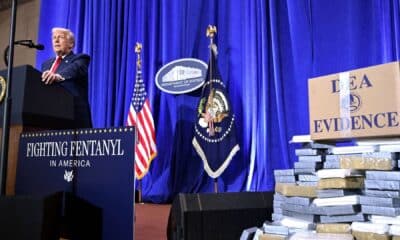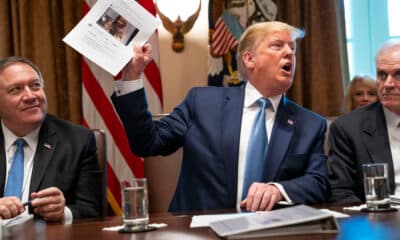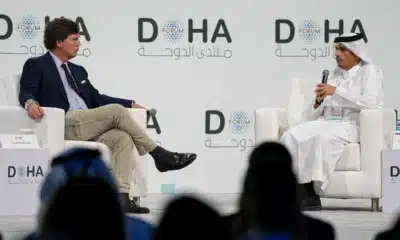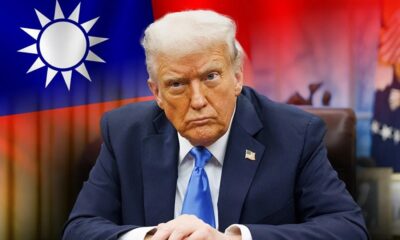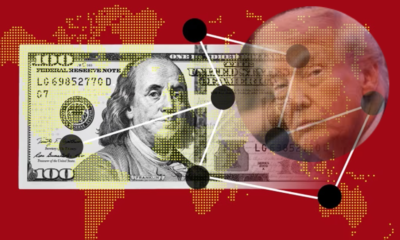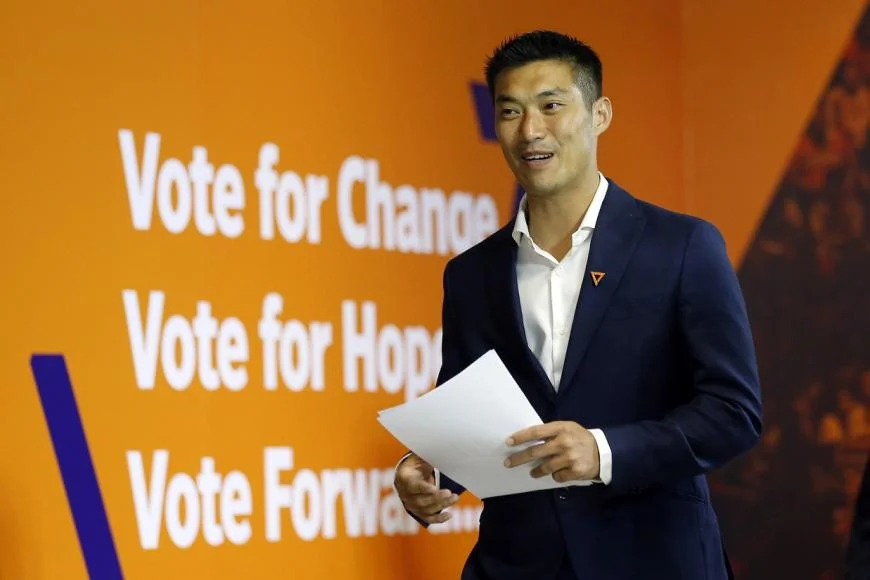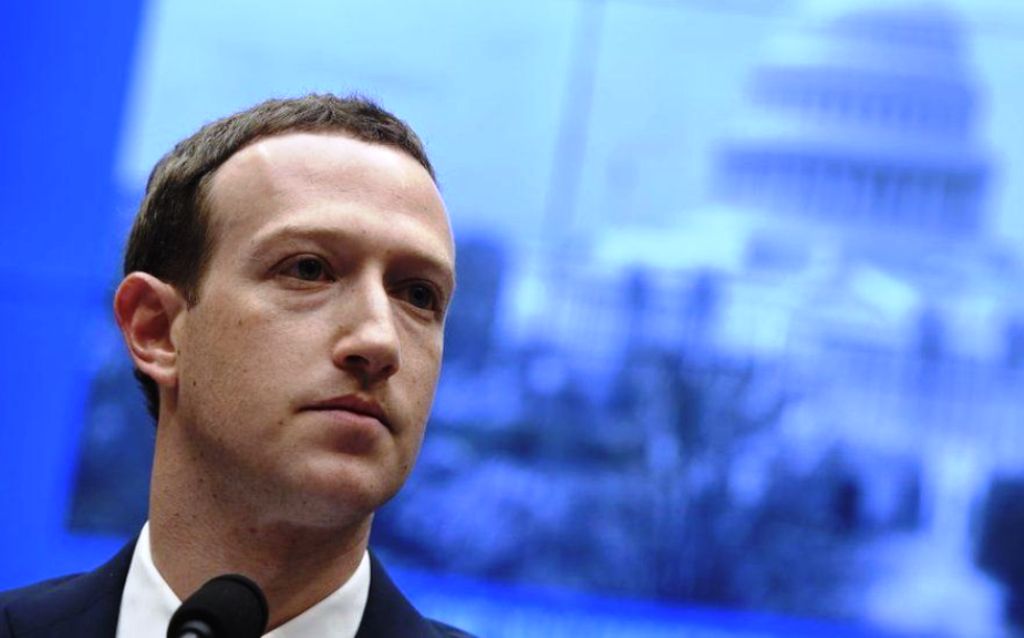News
Tulsi Gabbard’s Explosive Revelations on Russia Collusion Hoax Shake Washington
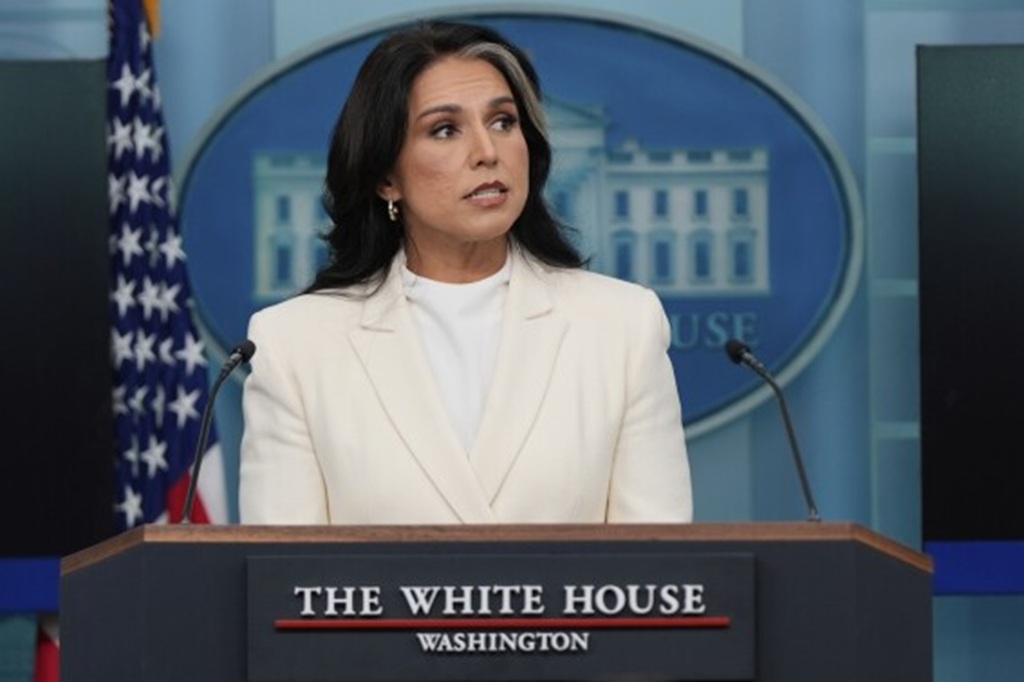
WASHINGTON, D.C. – Director of National Intelligence Tulsi Gabbard ignited intense debate in Washington after she released a collection of declassified files. Gabbard claims these documents reveal strong proof that former President Barack Obama and senior intelligence officials plotted to create the story of Russian intervention in the 2016 election.
According to her, this effort aimed to cast doubt on Donald Trump’s win and presidency. These claims sparked sharp arguments, with Democrats and mainstream outlets downplaying the release, while some legal analysts say top Obama-era officials could face serious legal trouble.
Gabbard’s Statement: Claims of a Planned Hoax
On July 19, 2025, Tulsi Gabbard, once a Democratic congresswoman who is now affiliated with Trump’s Republican circle, declassified over 100 documents. She argues these records show an intentional plan by the Obama administration to push an unfounded story about Russia swinging the 2016 election in Trump’s favour.
Speaking at the White House, Gabbard described the plot as an effort to overturn the voters’ choice. “Our findings today show there was a conspiracy at the highest levels in 2016,” she said, naming Obama, James Clapper, John Brennan, James Comey, Susan Rice, John Kerry, Loretta Lynch, and Andrew McCabe as key participants.
The released records, which include emails and memos, along with a long-hidden September 2020 House Intelligence Committee report, suggest Obama ordered his national security staff to publish a misleading intelligence assessment on January 6, 2017. This report claimed Moscow worked to help Trump.
Gabbard’s team points to other intelligence, gathered weeks before, which stated Russia lacked both the intent and means to hack U.S. voting systems. In one cited exchange, Clapper’s assistant emails intelligence chiefs after a December 9, 2016, National Security Council meeting, instructing them to draft a new assessment “at the President’s request,” outlining “methods Moscow used to influence the 2016 election.”
Gabbard claims Obama and his advisers knowingly relied on weak sources, such as the controversial Steele dossier, to build the collusion narrative. These claims were then leaked to reporters from major outlets such as The Washington Post, she says, even though U.S. agencies didn’t agree before the election that Russia had helped Trump. “This transcends party lines,” Gabbard told Fox News. “Confidence in our democracy is at stake.”
Journalists Analyze the Fallout: Taibbi, Kelly, O’Reilly Respond
After Gabbard released the documents, several well-known journalists pored over them and spoke out. Matt Taibbi, who gained attention for reporting on the Twitter Files, said on The Megyn Kelly Show that the December 2016 White House meeting appeared to be the key moment.
According to Taibbi, after that meeting with Obama, Clapper, Brennan, Rice and others, the intelligence community made a sharp turn in its view of Russian activities. He noted, using the 2020 House report as evidence, that the reassessment came after Obama’s “unusual” instructions, especially from Brennan.
Megyn Kelly, now a podcaster after her time with Fox News, called Gabbard’s move a potential major scandal. On her podcast, Kelly and Taibbi discussed how the Steele dossier, paid for by the Clinton campaign and filled with shaky claims, became part of the intelligence community’s official 2017 assessment.
Kelly highlighted that some intelligence insiders thought the dossier was more online gossip than hard fact, yet high-profile officials like Brennan, Comey, and McCabe pushed for it to be included.
Bill O’Reilly, a leading conservative commentator and 40-year news veteran, said on his show No Spin News that the declassified documents show a misuse of power by the Obama administration. O’Reilly argued Gabbard is exposing what Trump’s supporters suspected for years: that the Russia investigation was politically driven.
He praised Gabbard for her boldness and her journey from outsider Democrat to a close Trump ally, saying, “She is revealing what others in her position have not dared to.”
Democratic and Media Pushback
Democratic lawmakers and media outlets have rejected Gabbard’s accusations, calling them a ploy and based on misleading information. Congressman Jim Himes, the leading Democrat on the House Intelligence Committee, dismissed the claims as “baseless” and accused Gabbard of recycling old conspiracy theories to distract from other issues, including the Trump team’s handling of Jeffrey Epstein files.
Senator Mark Warner, a top Democrat on the Senate Intelligence Committee, referenced a 2020 bipartisan Senate report which concluded Russia did try to influence the 2016 election. “If there was a conspiracy under Obama, we would have found it,” he said on X, formerly Twitter, labelling Gabbard’s actions as an effort to muddy the historical record and undermine public trust in the intelligence community.
Major news brands, including CNN and The Washington Post, have pushed back on Gabbard’s account, too. The Washington Post published an article arguing her reading of the 2017 intelligence assessment is wrong, since the assessment focused on Russian propaganda efforts, not vote hacking.
The article pointed to four investigations, including reports from Robert Mueller and the 2020 Senate Intelligence Committee, that backed the assessment’s main conclusions. CNN noted that Gabbard’s decision to declassify a redacted intelligence report, which Trump never released, could put sensitive information at risk, setting off warnings from former officials.
Obama’s spokesperson called the claims “ridiculous and a weak attempt at distraction,” and reminded the media that Obama ordered the Russia probe in 2016 to help protect U.S. voting systems. Some critics say Gabbard is trying to rebuild her reputation with Trump, who once questioned her commitment after disputes on Iran.
Legal Pressure on Obama-Era Officials
Since the documents became public, the Justice Department confirmed it has started a review. James Clapper, Obama’s former Director of National Intelligence, is reportedly working with lawyers to address the possible investigation. Clapper, who oversaw the 2017 intelligence assessment, denied any wrongdoing, calling the accusations “false and baseless” in a CNN interview.
Observers are watching John Brennan, Obama’s CIA director, who some legal analysts believe is at risk of prosecution. Lawyer Mike Davis told The Glenn Beck Program he thinks Gabbard’s evidence could justify charges against Brennan, Clapper, and others for misleading Congress. Davis said, “If they kept the coverup going after they left office, they can’t hide behind presidential immunity.”
The Justice Department is investigating Brennan and James Comey, the former FBI director, following a referral from current CIA Director John Ratcliffe, who criticized how the 2017 assessment was put together.
Comey remains a focus of attention, since the documents suggest he strongly pushed for the Steele dossier to be included in the 2017 report, even while knowing its reliability was questionable. According to Gabbard’s office, both Comey and McCabe admitted, in transcripts from House hearings, that there was no hard evidence of Trump-Russia collusion.
Legal experts warn that any cases could be affected by the statute of limitations and recent Supreme Court rulings on presidential immunity.
The Justice Department has set up a task force to review Gabbard’s disclosures. This move may lead to grand jury appearances by Adam Schiff, Susan Rice, Comey, Brennan, Clapper, and possibly Obama. Schiff, a key figure during the House’s Russia probe, is accused of continuing the collusion story.
Susan Rice is named as a central attendee at the December 2016 meeting described in the documents. While officials are keeping details private, the formation of this group suggests rising stakes.
Wider Impact on U.S. Politics
Gabbard’s actions have reopened old arguments about the Russia probe, an issue that shaped Trump’s first term. Her supporters, including Trump, see her disclosures as solid proof that the investigation into his campaign was never genuine.
Trump has used social media to share images implying Obama and others should be jailed, and called the documents “rock-solid evidence” of major wrongdoing.
On the other side, critics warn that releasing such material could reveal sensitive sources or methods, risking national security. Democrats argue this renewed focus on 2016 takes away from ongoing issues, like the Epstein case or pressing foreign affairs.
“The Trump administration seems willing to release anything except the Epstein files,” Senator Warner joked.
Gabbard herself has become a symbol of change, shifting from a Democratic presidential hopeful to a top Trump appointee. Her history, including previous comments sympathetic to some Russian views, made her nomination as Director of National Intelligence controversial. Yet Trump has praised her recent work, describing her as a standout at a recent Republican gathering.
Conclusion
Tulsi Gabbard’s document release has returned the Russia collusion story to centre stage. Her supporters, including well-known journalists, regard the documents as clear proof of long-suspected misconduct at the highest levels of government.
Meanwhile, Democrats and most media voices reject the claims as a political distortion of well-established facts. What happens next in the legal arena is still unclear, but the Justice Department’s new task force could shape how history remembers the Obama administration.
Washington now faces a high-stakes fight over facts, accountability, and trust in the country’s institutions.
Related News:
Tulsi Gabbard DC Sparks Firestorm
News
Trump Targets Fentanyl While Democrats Shield Illegal Drug Dealers
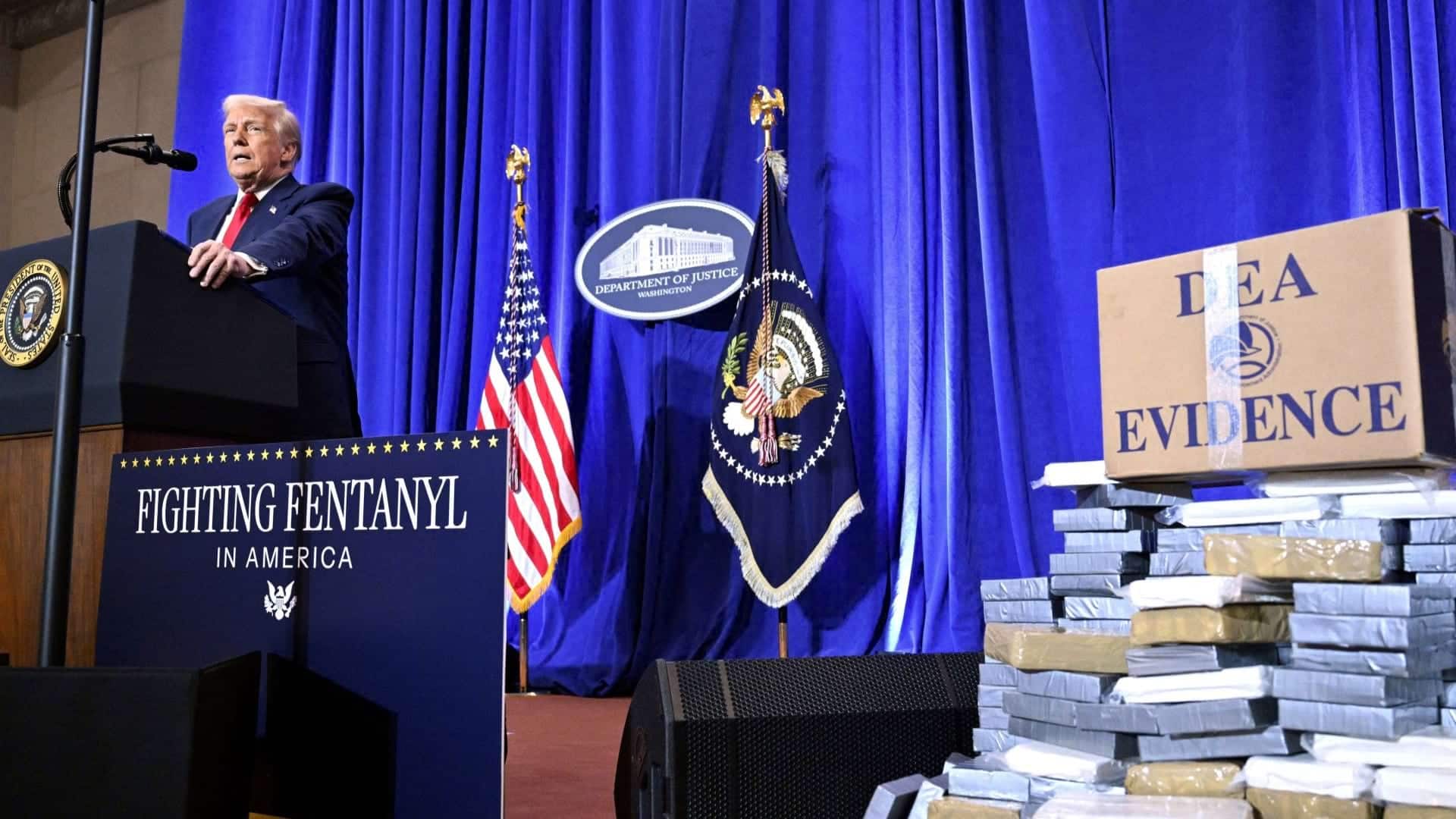
WASHINGTON D.C. – In a move his team calls historic, President Donald J. Trump has signed an executive order that classifies illicit fentanyl and its key precursor chemicals as a Weapon of Mass Destruction (WMD).
The order was signed in the Oval Office during a ceremony that also honored border security officials with medals. The setting highlighted how central the fentanyl crisis has become to the administration’s security and immigration agenda.
“No bomb does what this is doing,” Trump said, claiming fentanyl kills between 200,000 and 300,000 Americans each year. “We are officially labeling fentanyl as a weapon of mass destruction, because that is exactly what it is.”
In the text of the executive order, illicit fentanyl is described as “closer to a chemical weapon than a narcotic.” Just two milligrams, about the size of 10 to 15 grains of table salt, can be fatal.
By using the WMD label, the administration wants to pull in America’s national security agencies and treat fentanyl more like a biological or nuclear threat than a street drug.
Some legal scholars and policy analysts question how much the label will change on-the-ground enforcement, since current laws already allow long prison terms for fentanyl trafficking. The White House insists the change is more than symbolic. Officials say it pushes the crisis into the top tier of security threats and warns that fentanyl could be used for “concentrated, large-scale terror attacks” by hostile actors.
What the Executive Order on Fentanyl Actually Does
The order directs a broad group of federal agencies to increase action against fentanyl and its supply networks:
- The Attorney General is instructed to ramp up investigations, prosecutions, and sentencing enhancements for fentanyl-related crimes.
- The Departments of State and Treasury are ordered to target and sanction banks, companies, and individuals tied to fentanyl production, finance, or distribution.
- The Department of Homeland Security is asked to apply WMD-focused intelligence tools to track smuggling routes and criminal networks.
- The Departments of Defense and Justice must review when and how military resources could be used in cases of extreme fentanyl-related emergencies.
The move builds on earlier decisions, including labeling major cartels as Foreign Terrorist Organizations, raising tariffs on China, Mexico, and Canada, and authorizing strikes on international drug-smuggling vessels.
The administration argues that fentanyl profits fund cartel violence, corrupt foreign institutions, and weaken U.S. security from within.
A Crisis Still Killing Tens of Thousands
Fentanyl remains the top cause of death for Americans between 18 and 45 years old. While overdose numbers have improved from earlier peaks, the damage is still severe.
After years above 100,000 total drug deaths annually, overdoses involving synthetic opioids, mainly fentanyl, fell in 2024 to an estimated 60,000 to 70,000 deaths. Even with this drop, the toll is staggering.
Provisional CDC data show that synthetic opioids like fentanyl are involved in roughly 70 percent of recent overdose deaths. The White House highlights long-term totals and points to several hundred thousand lives lost to fentanyl over the last decade.
Families who have lost loved ones to fentanyl have been visible at Trump’s events, sharing stories of sudden loss, counterfeit pills, and addiction fueled by cheap, powerful drugs.
How Fentanyl Reaches the United States
Most illicit fentanyl that ends up in the United States is cooked in Mexico by powerful cartels, especially the Sinaloa Cartel and Cartel Jalisco Nueva Generación (CJNG). These groups buy or receive precursor chemicals mainly from China and India, then synthesize fentanyl in clandestine labs.
Smugglers move the finished drug mostly through ports of entry on the southern border. It is often hidden in cars, trucks, or commercial shipments, and mixed into fake prescription pills or cut into other street drugs.
According to the DEA, Mexican transnational criminal organizations control much of the fentanyl supply chain, from chemical sourcing to wholesale distribution. The same groups are tied to kidnappings, extortion, and brutal violence across Mexico and beyond.
Trump has publicly pressured foreign governments, using tariffs and hints of military force, and has accused some rivals of allowing or encouraging the flow of fentanyl that kills Americans.
White House Strategy: Using Every Policy Tool
The WMD designation is part of a wider strategy that blends border enforcement, foreign policy, intelligence work, and criminal prosecutions.
The administration points to:
- Tougher border security measures and more resources at ports of entry
- Terrorist designations for major cartels
- The HALT Fentanyl Act, which permanently placed fentanyl-related substances in Schedule I
- Increased seizures of fentanyl at the border and inside the country
Officials argue that these steps, paired with local and state efforts, have played a role in reducing overdose numbers. They stress that fentanyl is not just a public health concern, but a threat that demands military, intelligence, and diplomatic tools.
Democrats Push Back on Trump’s Approach
Democratic lawmakers and many public health experts say the WMD label is more about politics than policy. Some legal experts describe the move as a “political exercise” that adds little, since fentanyl trafficking is already heavily punished.
Democrats and many treatment advocates prefer a focus on:
- Expanding addiction treatment
- Increasing access to medications like buprenorphine and methadone
- Supporting harm-reduction programs such as naloxone distribution
- Addressing mental health and the economic roots of substance use
These critics argue that enforcement alone will not solve the problem and that decades of harsh drug policies have not stopped addiction.
They also point out that the recent decline in overdose deaths is likely influenced by several factors, such as changing drug use patterns among younger people and shifts in the illegal drug supply, rather than enforcement alone.
Some warn that when law enforcement is shifted away from drug investigations to handle immigration tasks, it can weaken efforts to target traffickers and major supply networks.
Sanctuary Policies and the Fight Over Local Cooperation
Republicans in Congress and conservative commentators often connect fentanyl trafficking to immigration debates, especially in cities with “sanctuary” policies.
They argue that Democratic governors and mayors in sanctuary jurisdictions block federal immigration enforcement and, in doing so, shield criminal networks that traffic drugs.
In cities like Chicago, Denver, Boston, and New York, local policies limit cooperation with ICE detainers unless there is a criminal warrant or certain serious charges. These rules generally prevent local jails from holding people longer solely for immigration purposes.
House Oversight Committee hearings earlier this year put mayors from sanctuary cities under scrutiny. Republican members accused them of creating loopholes that let repeat offenders, including suspected traffickers, avoid deportation.
The mayors and their allies counter that:
- Sanctuary policies do not stop police from arresting or prosecuting criminals
- Local officers still honor court-approved warrants
- Community trust increases when residents do not fear immigration arrests for reporting crimes
- Research has often linked sanctuary policies with equal or lower crime rates compared to similar cities
Conservatives remain unconvinced and argue that defiance of federal immigration authorities gives cartels and gangs room to operate. Proposals to cut federal funds from jurisdictions that refuse to cooperate with ICE are still being debated in Congress.
A Defining Fight in Trump’s Second Term
Trump has framed the fentanyl crisis as one of the defining battles of his second term. His team says they are using “every available tool” against cartels, chemical suppliers, and financial middlemen who profit from the drug.
Supporters see the WMD designation as a long-overdue recognition of how deadly fentanyl has become. Critics warn that dramatic language without strong treatment and prevention policies could repeat the mistakes of earlier drug wars.
As the executive order rolls out and agencies adjust their strategies, the country will see whether treating fentanyl like a weapon of mass destruction changes the course of an epidemic that has taken hundreds of thousands of American lives.
Related News:
Democrats in Turmoil Over Hopeless Impeachment Drive Against HHS Secretary RFK Jr.
News
NATO Chief Warns European Members to Ready for War
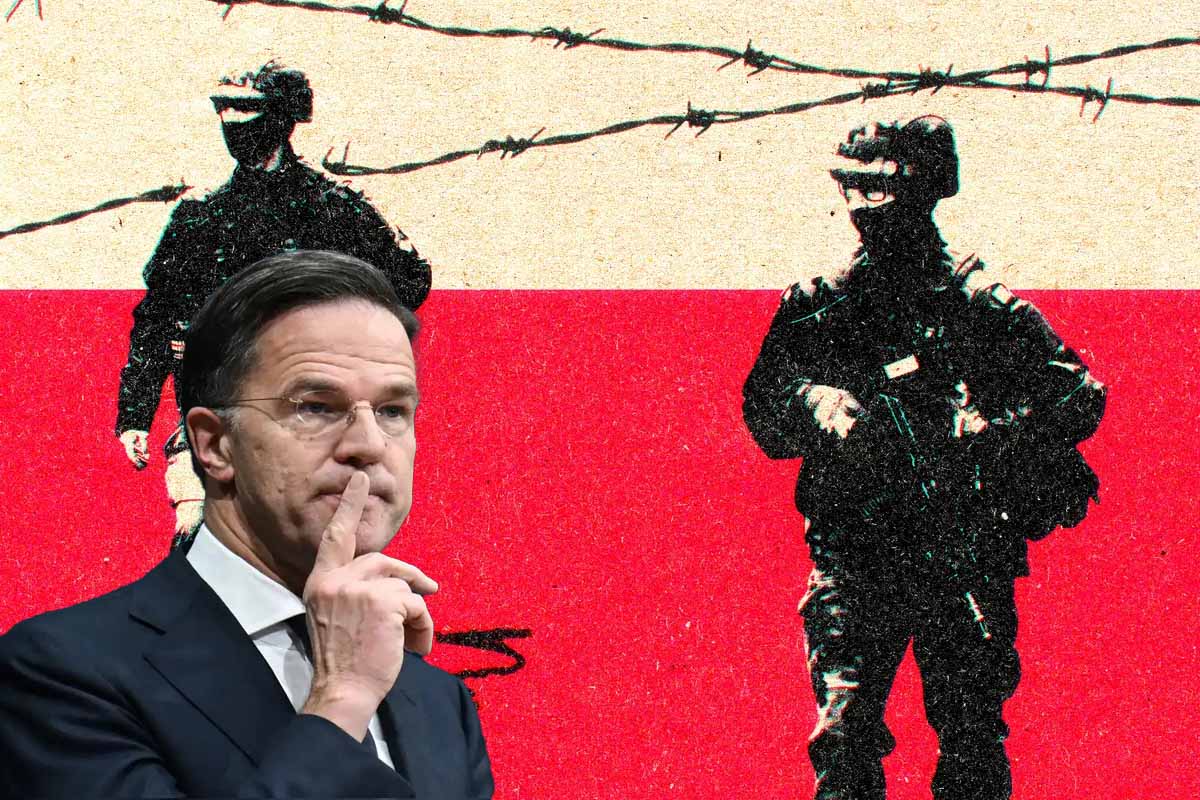
BRUSSELS – NATO Secretary General Mark Rutte has delivered one of the starkest warnings heard in Europe since the end of the Cold War, telling EU leaders that the continent must be ready for the possibility of a large-scale war with Russia within the next five years.
Speaking at a closed-door meeting of EU defence ministers in Brussels, later confirmed by several officials present, the former Dutch prime minister dropped the cautious language that usually shapes NATO messaging.
“We are no longer in a grey zone,” Rutte said, according to sources. “Europe has to rearm at a speed and on a scale not seen since the 1930s, or we risk facing a war we are not prepared to fight, and almost certainly not prepared to win.”
The remarks mark a sharp shift in tone from the alliance. For nearly two years, NATO leaders have argued that extensive military aid to Ukraine would be enough to deter Russian President Vladimir Putin from attacking any NATO member. Rutte’s warning suggests that faith in that assumption has weakened inside the organisation.
Three senior diplomats who attended the meeting told reporters, on condition of anonymity, that Rutte shared new intelligence suggesting Russia is rebuilding its armed forces far faster than Western officials expected, despite heavy losses in Ukraine.
These assessments indicate that Moscow could have a conventional force, able to conduct operations against the Baltic states and carry out sustained long-range strikes across Europe, by around 2029 or 2030.
Dangerous Complacency
“Russia isn’t just swapping one destroyed tank for one new tank,” Rutte reportedly told ministers. “They have moved their whole economy onto a war footing. Their defence sector now produces more artillery shells in a single month than the entire European Union turns out in a year.
If we don’t match that kind of effort, the balance of power will shift firmly against us.”
Rutte singled out Germany, France, Italy, and Spain for pointed criticism, accusing them of “dangerous complacency” over defence spending and arms procurement.
He praised Poland, the Baltic states, and the Nordic countries for moving quickly to raise their military budgets and bring back or strengthen conscription, but warned that, taken together, Europe remains “woefully unprepared” for a high-intensity conflict.
The most sensitive moment came when Rutte spoke about the possible impact of a second Donald Trump term in the White House. “We must plan for every scenario, including one where America is distracted or decides not to honour Article 5,” he said, referring to NATO’s mutual defence clause.
The remark caused clear unease among several southern European ministers, some of whom later described it in private as “unhelpful scaremongering”.
After the meeting, Rutte softened his language in public but did not back away from his main message. “Europe must be ready to defend every inch of allied territory, with or without outside support,” he told journalists outside the European Council building.
“That takes money, political courage, and a deep change in how Europeans think about security. The time of peace dividends is over.”
NATO Target Spending
His warning comes as several European governments are already, albeit slowly, increasing defence budgets. Germany said last month that it will hit NATO’s target of spending 2% of GDP on defence by 2027, three years later than it had initially pledged.
France has promised to raise its defence spending to 3% of GDP by 2030, while Poland already spends more than 4%. Security analysts say that even these higher figures still fall well short of what would be needed to narrow the gap with Russia’s growing arsenal.
Experts interviewed by Reuters said that Rutte’s five-year timeline is “completely realistic”. Dr Claudia Major, of the German Institute for International and Security Affairs, said Russia’s ability to absorb huge losses and keep expanding its defence industry has “shocked” many Western intelligence services. “They are not just rebuilding,” she said. “They are innovating and growing at a scale we have not seen since the Second World War.”
As Europe moves into 2026, facing weak growth, political division, and public fatigue over the war in Ukraine, Rutte’s comments set out a stark choice. Either the continent rearms quickly at great financial and political cost, or it risks becoming exposed to Russian pressure, or even direct military attack, within a few years.
For now, his warning appears to have prompted at least some immediate reactions. Late on Wednesday, the defence ministers of Spain and Italy announced fast-track reviews of their military procurement plans. The European Commission also confirmed that it is putting together a proposed €100 billion “ReArm Europe” loan package, which EU leaders are expected to debate next month.
Whether Europe can find the unity and determination to act before the window closes has now become the central security question facing the continent.
Related News:
Trump Calls European Leaders Weak, Warns Over Mass Migration
News
Walz Blames Trump for Minnesota Fraud Crisis, Touts New Integrity Push
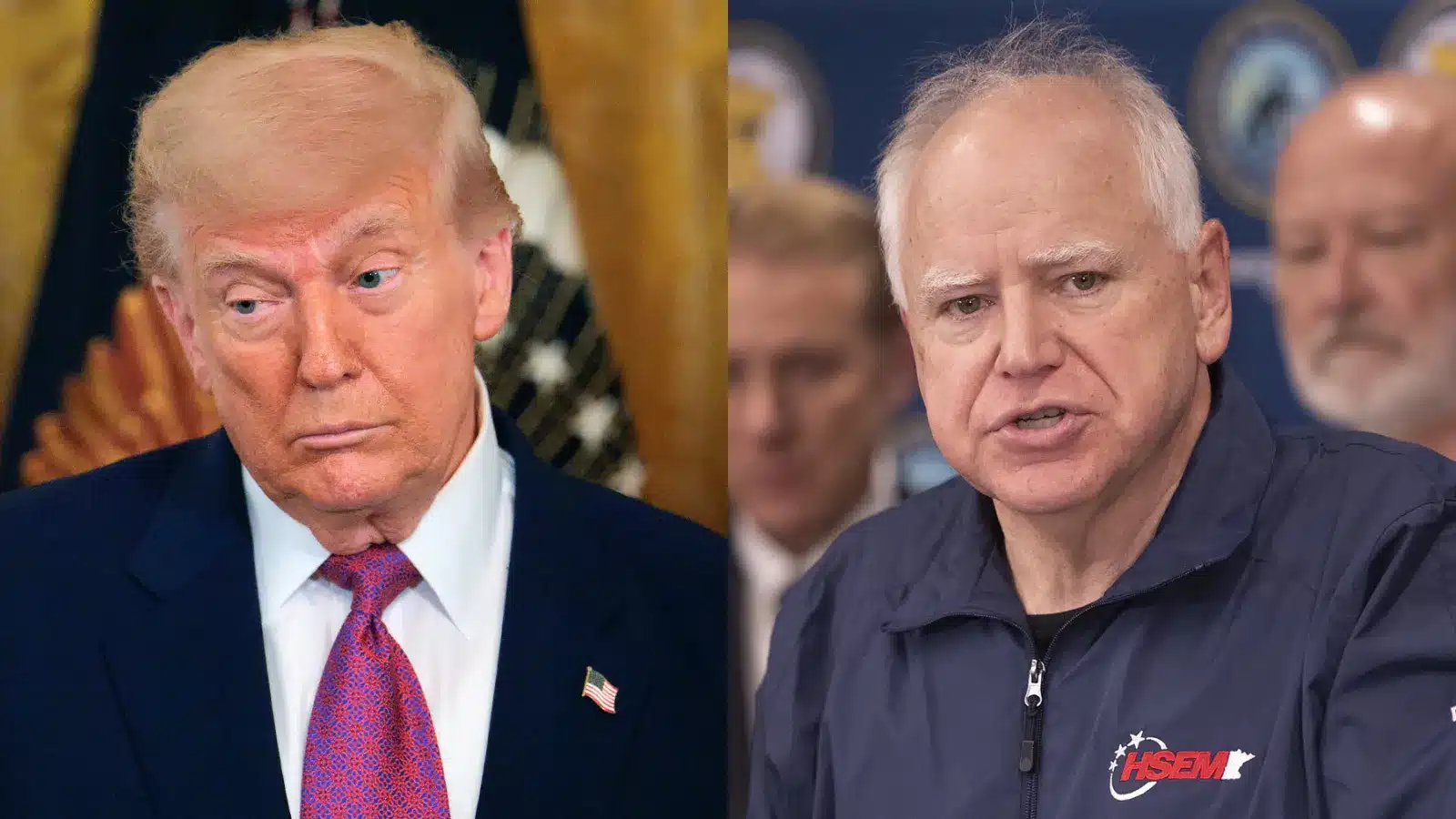
ST. PAUL, Minn. – Governor Tim Walz, a Democrat, is pushing back hard against former President Donald Trump’s comments about widespread fraud in Minnesota’s public assistance programmes.
Walz accuses Trump of using the problem for political gain while highlighting large, costly failures in the state system. At the same time, the Governor is rolling out new, broad anti-fraud measures across state agencies, a move that feels more urgent as similar large-scale fraud cases surface in places like Ohio.
Public anger has grown after federal prosecutors charged dozens of people in what they call the largest single pandemic fraud case in the country. The case centres on the non-profit “Feeding Our Future” and an alleged $250 million scheme involving federal child nutrition funds.
The total losses across different state-run benefit programmes remain disputed, but a former U.S. Attorney for the District of Minnesota has said the full amount could top $1 billion, a figure Trump has repeated often.
Trump has stepped up his focus on the scandal in recent weeks. He has used the Minnesota fraud cases to launch harsh attacks on the state’s large Somali community, where many of the defendants come from.
His comments, including a threat to end Temporary Protected Status for Somalis in Minnesota and calling the community “garbage”, have drawn criticism from both parties, while also putting even more national attention on Minnesota’s oversight problems.
“The buck stops with me, and my focus now is on making sure not a single pound is stolen,” Walz said last week, accepting responsibility for failures on his watch. He then turned sharply to Trump’s role, arguing that the former President’s words are a harmful distraction.
“What is not helpful is the President of the United States demonising an entire community or pardoning someone single-handedly responsible for $1.6 billion in fraud,” Walz wrote in a recent opinion piece, referring to separate federal matters. He argues that Trump is turning a serious policy issue into a political weapon, while the root problem stems from rushed federal relief money with weaker safeguards during the pandemic.
A New Push Against Fraud In State Programmes
With Republicans making fraud a centrepiece of their campaigns against him, Walz is trying to show firm leadership by building new layers of protection. On Friday, he announced a centralised anti-fraud structure and appointed the state’s first Director of Program Integrity.
Walz chose Tim O’Malley for the job, a former FBI agent and former head of the Minnesota Bureau of Criminal Apprehension. O’Malley has worked for both Republican and Democratic governors. He stressed that he is politically neutral and said his only goal is to serve Minnesotans and rebuild trust in public institutions.
As Director, O’Malley will work across every state agency to create shared standards for investigations, reporting, and data sharing. A key aim is to block fraudsters who move between different programmes at the same time.
Minnesota has also hired the forensic firm WayPoint, Inc. to help build a full fraud prevention “toolkit” that will be used across the state government. These moves are meant to go beyond the high-profile Feeding Our Future scandal and tackle deeper weaknesses in programmes such as Medicaid and Housing Stabilization Services, where credible fraud claims have also surfaced.
A National Pattern Shows Wider Risk
Federal officials often point to the Minnesota case as the largest single scheme of its kind, but the state is not alone. Walz himself has noted a string of large Medicaid fraud cases around the country, naming Ohio, Arizona, Nebraska, and Texas as examples.
The Ohio case, which echoes some of the same problems seen in Minnesota’s pandemic schemes, involves alleged false claims in the Medicaid system. The details are different, often tied to overcharging or billing for care that never took place in disability and behavioural health services, but the basic pattern is similar.
A huge, complex benefits system, combined with fast government spending, gave criminals room to slip through weak controls. The spread of these multi-state schemes shows that the problem is national, rooted in rapid government payouts without strong enough checks.
By appointing a new integrity chief, Walz is trying to show that he is taking charge and not just reacting to criticism from Trump and Republican challengers. His administration is counting on O’Malley’s experience and new central controls to restore public trust and push back on claims that Minnesota has become a “hub of fraudulent money laundering activity”.
Conservative critics argue that the actions come too late and say the state allowed years of large losses before acting. The real test will be whether these new steps reduce fraud in a clear way, protect public money, and help decide Walz’s political fate.
-

 News2 months ago
News2 months agoPeace Prize Awared to Venezuela’s María Corina Machado
-

 Politics2 months ago
Politics2 months agoFar Left Socialist Democrats Have Taken Control of the Entire Party
-

 Politics2 months ago
Politics2 months agoHistorian Victor Davis Hanson Talks on Trump’s Vision for a Safer America
-
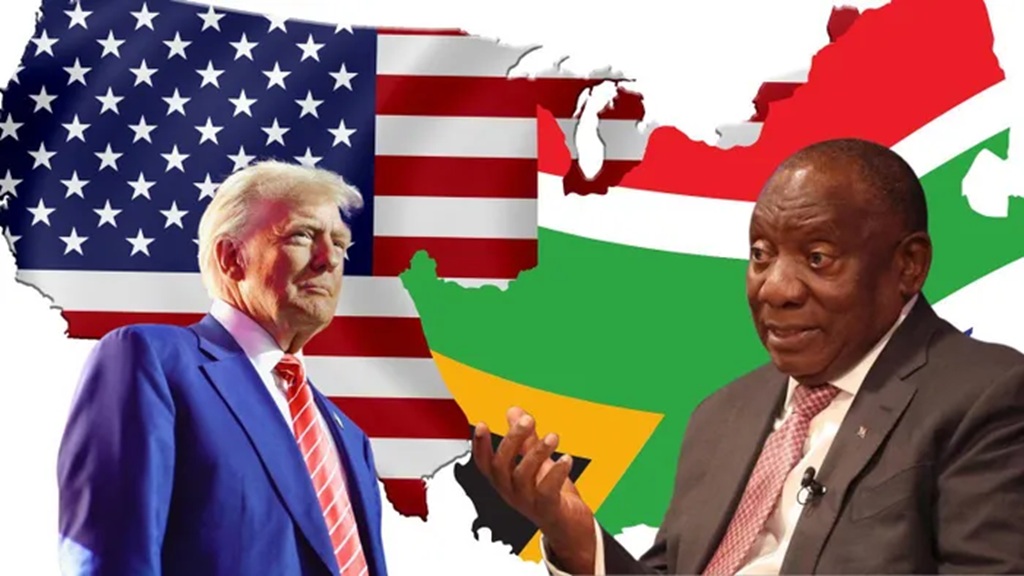
 News3 months ago
News3 months agoSouth Africa’s Audacious Bid to Teach America a Lesson
-

 Politics2 months ago
Politics2 months agoThe Democratic Party’s Leadership Vacuum Fuels Chaos and Exodus
-

 News2 months ago
News2 months agoThe Radical Left’s Courtship of Islam is a Road to Self-Defeat
-
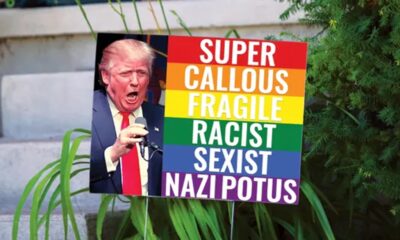
 Politics2 months ago
Politics2 months agoDemocrats Fascist and Nazi Rhetoric Just Isn’t Resognating With Voters
-

 Politics2 months ago
Politics2 months agoChicago’s Mayor Puts Partisan Poison Over People’s Safety as Trump Troops Roll In



